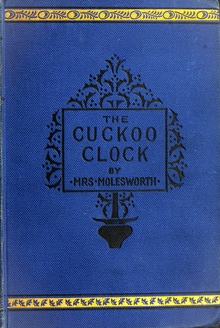This article possibly contains original research .(March 2025) |
 Front cover of the first edition published as by Mrs. Molesworth, 1882 | |
| Author | Mary Louisa Molesworth |
|---|---|
| Illustrator | Walter Crane |
| Genre | Children's novel, fantasy |
| Publisher | Macmillan and Co. |
Publication date | 1877 |
| Publication place | United Kingdom |
| Pages | 242 (first edition) |
| OCLC | 6219054 |
| LC Class | PZ7.M732 Cu4 (1914) [1] |
| Text | The Cuckoo Clock at Wikisource |
The Cuckoo Clock is a British children's fantasy novel by Mary Louisa Molesworth, published in 1877 by Macmillan. [2] It was originally published under the pen name Ennis Graham and reissued in 1882 as by Mrs. Molesworth, [3] the name by which she is widely known. Both of those editions and many later ones were illustrated by Walter Crane; an 1893 uniform edition is available online at the University of Pennsylvania. [2] An edition illustrated by Maria L. Kirk was published in 1914; it is available online at HathiTrust Digital Library. [1] [4]